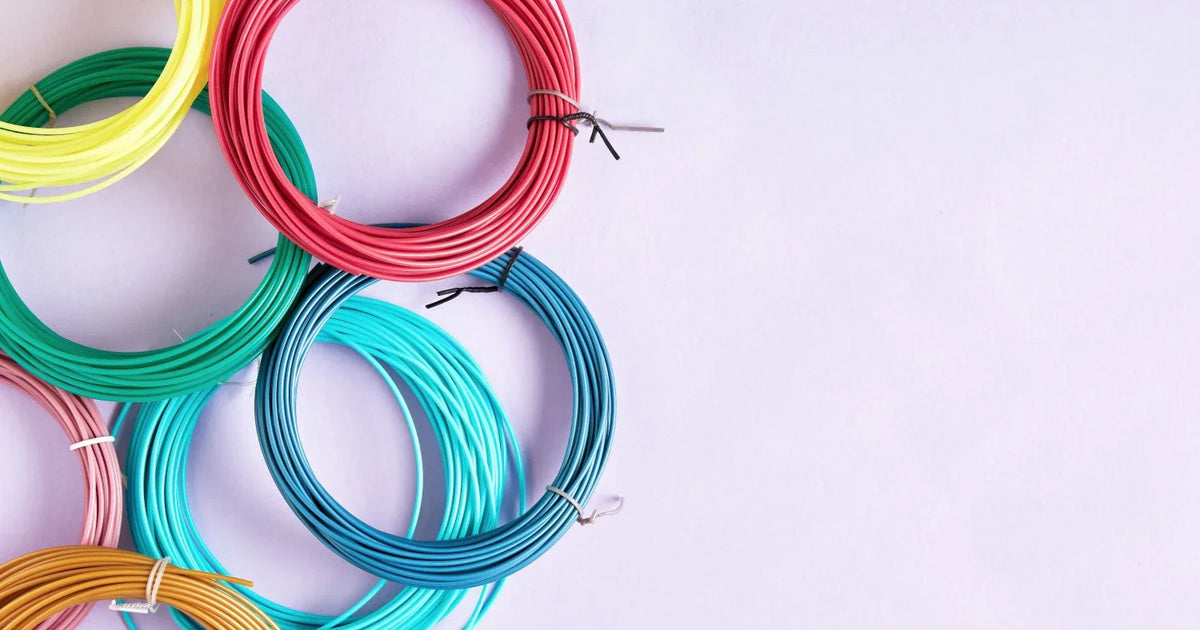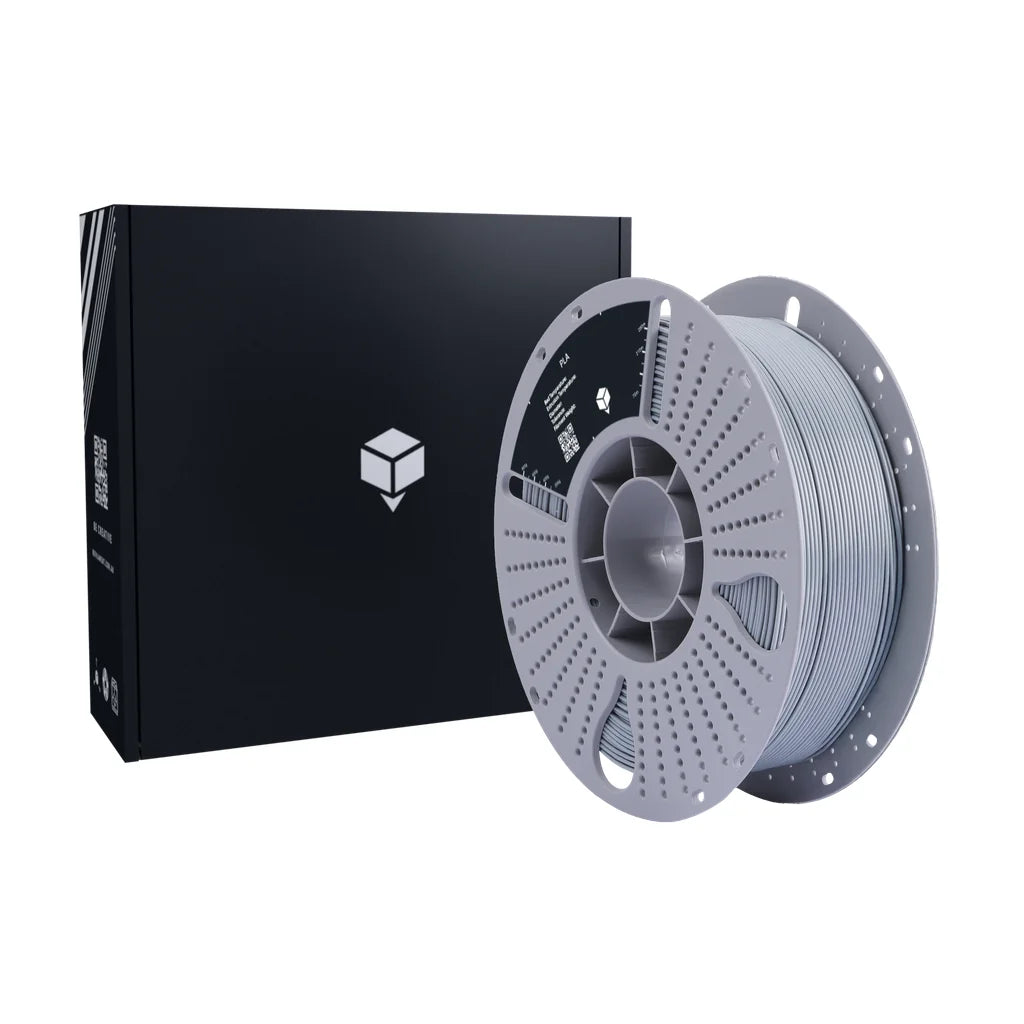
Welcome, fellow makers! Whether you're just embarking on your 3D printing journey or you're a seasoned enthusiast looking to refine your material choices, understanding filament is key. Among the vast array of options, PLA (Polylactic Acid) stands out as the undisputed king for its ease of use, versatility, and environmental friendliness. But with so many choices, how do you navigate the market and ensure you're getting the right material for your projects?
This comprehensive PLA filament buying guide is designed to answer all your questions. We'll dive deep into what makes PLA so popular, explore the various PLA filament types, and provide practical tips to help you choose the best PLA filament for your specific needs and 3D printer. Get ready to elevate your 3D printing experience!
Table of Contents
- What is PLA Filament? Understanding the Basics
- Deciphering PLA Filament Types: Standard, Enhanced & Specialised Filaments
- How to Choose the Best PLA Filament for Your Printer and Projects
- Essential 3D Printer Filament Buying Tips for Quality Prints
- Optimising Your Prints: Getting the Best Out of Your PLA Filament
- Frequently Asked Questions
- Conclusion
What is PLA Filament? Understanding the Basics
PLA filament is derived from renewable resources like corn starch or sugarcane, making it one of the most environmentally conscious options in 3D printing. It's renowned for its ease of use, making it the go-to material for beginners and a staple for hobbyists. Here’s why PLA is so beloved:
- Ease of Printing: PLA prints at relatively low temperatures, reducing the chances of warping or bed adhesion issues. This means less troubleshooting and more successful prints, which is fantastic for those new to the hobby.
- Low Odour: Unlike some other filaments (like ABS), PLA produces minimal odour during printing, making it suitable for home environments or shared workspaces.
- Good Detail and Finish: PLA typically produces prints with a smooth, glossy finish and excellent detail resolution, perfect for models, prototypes, and decorative items.
- Biodegradability: While not instantly compostable in a home setting, PLA can break down in industrial composting facilities, offering a more sustainable alternative to petroleum-based plastics.
- Versatility: From intricate figurines to functional prototypes, PLA can handle a wide variety of applications.
If you're wondering what the best PLA filament for beginners is, it's generally any good quality standard PLA. Its forgiving nature makes it an ideal starting point for mastering your 3D printer.

Deciphering PLA Filament Types: Standard, Enhanced & Specialised Filaments
When searching for PLA, you'll encounter various terms and designations. Understanding these different PLA filament types is crucial to making an informed decision in your PLA filament buying guide journey.
Standard PLA
This is your everyday PLA – reliable, easy to print, and available in a vast spectrum of colours. It's perfect for general prototyping, artistic models, and any project where extreme strength or specific surface properties aren't paramount.
Enhanced PLAs (Addressing PLA+, PLA 2.0, PLA Pro, etc.)
You've likely seen terms like "PLA+", "PLA 2.0", or "PLA Pro" marketed by various brands. These names often imply enhanced strength, finish, or ease of use. While some manufacturers genuinely tweak their formulas for improved properties, others use these as marketing terms without significant differences. The distinctions in printability, strength, or finish between standard PLA and these "enhanced" versions can vary wildly between brands.
At Blue Ember, we believe in delivering top-tier quality without gimmicky names. Our standard Blue Ember PLA filament is meticulously engineered to compete directly with, and often surpass, these so-called 'enhanced' versions, offering exceptional print quality, reliability, and strength right out of the box. When you choose PLA filament from Blue Ember, you're getting premium performance designed to meet the demands of discerning hobbyists and professionals alike. We focus on consistent diameter, excellent flow, and vibrant colours, ensuring that our PLA provides the best PLA filament experience without needing a fancy suffix.
Aesthetic PLA Filaments
Beyond standard colours, there's a world of visually stunning PLA options:
- Silk PLA: Offers a beautiful, shiny, pearlescent finish that mimics silk. Ideal for decorative prints, vases, or anything you want to stand out. Check out our Pla Silk White for an example.
- Matte PLA: Provides a non-glossy, often textured finish that helps hide layer lines and provides a sophisticated look.
- Glitter/Sparkle PLA: Infused with tiny reflective particles for a dazzling effect.
- Transparent/Translucent PLA: Allows light to pass through, creating interesting effects for lampshades, windows, or light diffusers.
- Glow-in-the-Dark PLA: Absorbs light and emits a bright glow in the dark, perfect for eye-catching 3D prints.
Composite PLA Filaments
These are PLA filaments blended with other materials to give them unique properties or aesthetics:
- Wood PLA: Contains real wood fibres, allowing prints to look, feel, and even smell like wood. They can often be sanded and stained.
- Metal PLA: Infused with fine metal powders (like copper, bronze, or brass). Prints will be heavier and can be polished to achieve a metallic sheen.
- Carbon Fibre PLA (CF-PLA): Contains short carbon fibres, increasing stiffness, strength, and reducing weight. It's more abrasive on nozzles, so hardened steel nozzles are recommended.
- Marble PLA: Designed to mimic the appearance of marble with specks embedded in the filament.
How to Choose the Best PLA Filament for Your Printer and Projects
Choosing the right PLA isn't just about colour; it's about matching the filament to your printer's capabilities and your project's demands. Here are critical factors to consider in your PLA filament buying guide process:
1. Filament Diameter and Tolerance
The vast majority of consumer 3D printers use either 1.75mm or 2.85mm diameter filament. Always check your printer's specifications to ensure you purchase the correct size. More importantly, look for tight diameter tolerance, often expressed as +/- 0.02mm or 0.03mm. A consistent diameter is paramount for reliable extrusion and high-quality prints. Poor tolerance can lead to under-extrusion, over-extrusion, and clogged nozzles.
2. Spool Size and Storage
Filament spools typically come in 1kg sizes, but you can find smaller (250g, 500g) or larger (2kg, 5kg) options. Consider your usage; a larger spool might be more economical for frequent printing, while smaller spools are great for trying new colours or materials without commitment. Remember that PLA is hygroscopic, meaning it absorbs moisture from the air. Proper storage in a dry box or sealed bag with desiccant is essential to maintain filament quality and prevent issues like bubbling, stringing, and weakened prints. This is a vital PLA filament buying guide tip for longevity.
3. Project Requirements
- Strength and Durability: For functional parts that need to withstand some stress, look for high-quality standard PLA or consider specific composite PLAs like CF-PLA. While PLA isn't as strong as PETG or ASA, a well-tuned print with quality PLA can be surprisingly robust.
- Aesthetic Finish: If visual appeal is key, explore Silk, Matte, Glitter, or Transparent PLA.
- Flexibility: PLA is generally rigid. If you need flexibility, you'll need a different material like TPU or TPE.
- Chemical Resistance/Outdoor Use: For parts exposed to harsh chemicals or outdoor elements, PLA is not the best PLA filament choice. Consider ASA or PETG.
Essential 3D Printer Filament Buying Tips for Quality Prints
Beyond the type of PLA, there are general 3D printer filament buying tips that apply across the board to ensure you get the best PLA filament and overall printing experience:
- Brand Reputation and Reviews: A reputable brand like Blue Ember invests in quality control, consistent manufacturing, and customer support. Look for brands with positive reviews regarding filament consistency, colour accuracy, and customer service.
- Packaging: Ensure the filament comes sealed in a vacuum-packed bag with a desiccant packet. This indicates good storage practices before it reaches you.
- Price vs. Quality: While it's tempting to opt for the cheapest option, extremely low-cost filaments often compromise on quality control, leading to inconsistent diameters, poor winding, and more print failures. Investing a little more in a quality filament will save you headaches, time, and wasted material in the long run. Blue Ember strives to offer premium quality at competitive prices, giving you excellent value.
- Winding Quality: Poorly wound spools can lead to tangles and knots, causing print failures. While hard to assess online, reviews might mention this. Blue Ember filaments are precisely wound to ensure smooth unwinding during your prints.
- Consider Samples: If available, purchasing small samples is a great way to test a new brand or filament type before committing to a full spool.

Optimising Your Prints: Getting the Best Out of Your PLA Filament
Even the best PLA filament needs proper print settings to shine. Here are some quick tips for beginners to optimise their PLA prints:
- Nozzle Temperature: Most PLAs print well between 190°C and 220°C. Start with the manufacturer's recommended temperature (usually on the spool or packaging). If you see stringing, try lowering the temperature slightly. If layers aren't adhering, increase it.
- Bed Temperature: A heated bed isn't strictly necessary for PLA but can improve adhesion and prevent warping. Aim for 50°C to 60°C. Use an adhesive like glue stick, hairspray, or a PEI sheet for best results.
- Print Speed: For beginners, start with a moderate print speed (e.g., 50-60mm/s). You can experiment with higher speeds as you gain experience, but be aware that too fast can compromise print quality.
- Cooling: PLA benefits greatly from active cooling, so ensure your part cooling fan is on after the first few layers. This helps solidify the plastic quickly, improving overhangs and fine details.
- Retraction Settings: Proper retraction (how much filament is pulled back into the nozzle when moving between parts) is crucial to prevent stringing and oozing. Calibrate this for your specific printer and filament.
- First Layer Adhesion: A well-calibrated bed and a slow, squished first layer are vital for a successful print. Make sure your nozzle is at the correct height.
Frequently Asked Questions
Is PLA environmentally friendly?
PLA is considered more environmentally friendly than many other plastics because it's derived from renewable resources like corn starch. While it's biodegradable, it typically requires industrial composting facilities to break down effectively, rather than degrading quickly in a home compost bin. However, its production has a lower carbon footprint compared to petroleum-based plastics, making it a sustainable choice for 3D printing.
What's the difference between PLA and PETG?
PLA is easier to print, offers good aesthetics, and is great for beginners. It's rigid and can be brittle under stress, and has lower heat resistance. PETG (Polyethylene Terephthalate Glycol) is more durable, flexible, and heat-resistant than PLA, making it suitable for functional parts. It's also food-safe (in its pure form) and good for outdoor use. However, PETG can be more challenging to print, often producing more stringing and requiring higher temperatures. For many, PLA is the best PLA filament for beginners, while PETG is a good step up for more robust parts.
Can I paint PLA prints?
Yes, PLA prints can be painted! They accept most paints well, including acrylics, spray paints (ensure they are plastic-compatible), and model paints. For the best results, it's recommended to lightly sand the print, apply a primer, then your chosen paint, and finally a clear coat for protection and a desired finish.
How long does PLA filament last on the shelf?
With proper storage, PLA filament can last for a year or even longer. The key is to keep it dry and away from humidity. If exposed to moisture, PLA can become brittle and lead to poor print quality (e.g., bubbling, poor layer adhesion). Always store your filament in a sealed, airtight container or bag with desiccant packets when not in use.
What is the best PLA filament for beginners?
For beginners, the best PLA filament is a high-quality, standard PLA from a reputable brand like Blue Ember. Our PLA is engineered for excellent consistency and ease of printing, meaning fewer headaches and more successful prints for those learning the ropes. Avoid extremely cheap, no-name brands initially, as inconsistencies can make troubleshooting much harder. Focus on getting your printer dialled in with a reliable material first.
Conclusion
Navigating the world of 3D printing filament can seem daunting, but with this comprehensive PLA filament buying guide, you're now equipped with the knowledge to make informed decisions. From understanding different PLA filament types to mastering your printer settings, choosing the right material is a crucial step towards consistent, high-quality prints.
Remember, while many brands offer materials with different suffixes like 'PLA+' or 'Pro', our standard Blue Ember PLA filament is meticulously developed to deliver premium performance without the need for gimmicky names. We focus on consistent quality, vibrant colours, and reliable printing to ensure you always get the best PLA filament experience.
Ready to start creating? Explore the full range of high-quality PLA filaments and other 3D printing supplies available at befilament.com.au. We're committed to providing Australian makers with the finest materials to bring their creations to life!

